Non-invasive positive pressure ventilation for central sleep apnoea in adults
- PMID: 36278514
- PMCID: PMC9590003
- DOI: 10.1002/14651858.CD012889.pub2
Non-invasive positive pressure ventilation for central sleep apnoea in adults
Abstract
Background: Central sleep apnoea (CSA) is characterised by abnormal patterns of ventilation during sleep due to a dysfunctional drive to breathe. Consequently, people with CSA may present poor sleep quality, sleep fragmentation, inattention, fatigue, daytime sleepiness, and reduced quality of life.
Objectives: To assess the effectiveness and safety of non-invasive positive pressure ventilation (NIPV) for the treatment of adults with CSA.
Search methods: We searched the Cochrane Central Register of Controlled Trials (CENTRAL), MEDLINE, Embase, and Scopus on 6 September 2021. We applied no restrictions on language of publication. We also searched clinical trials registries for ongoing and unpublished studies, and scanned the reference lists of included studies to identify additional studies.
Selection criteria: We included randomised controlled trials (RCTs) reported in full text, those published as abstract only, and unpublished data.
Data collection and analysis: Two review authors independently selected studies for inclusion, extracted data, and assessed risk of bias of the included studies using the Cochrane risk of bias tool version 1.0, and the certainty of the evidence using the GRADE approach. In the case of disagreement, a third review author was consulted.
Main results: We included 15 RCTs with a total of 1936 participants, ranging from 10 to 1325 participants. All studies had important methodological limitations. We assessed most studies (11 studies) as at high risk of bias for at least one domain, and all studies as at unclear risk of bias for at least two domains. The trials included participants aged > 18 years old, of which 70% to 100% were men, who were followed from one week to 60 months. The included studies assessed the effects of different modes of NIPV and CSA. Most participants had CSA associated with chronic heart failure. Because CSA encompasses a variety of causes and underlying clinical conditions, data were carefully analysed, and different conditions and populations were not pooled. The findings for the primary outcomes for the seven evaluated comparisons are presented below. Continuous positive airway pressure (CPAP) plus best supportive care versus best supportive care in CSA associated with chronic heart failure In the short term, CPAP plus best supportive care may reduce central apnoea hypopnoea index (AHI) (mean difference (MD) -14.60, 95% confidence interval (CI) -20.11 to -9.09; 1 study; 205 participants). However, CPAP plus best supportive care may result in little to no difference in cardiovascular mortality compared to best supportive care alone. The evidence for the effect of CPAP plus best supportive care on all-cause mortality is very uncertain. No adverse effects were observed with CPAP, and the results for adverse events in the best supportive care group were not reported. Adaptive servo ventilation (ASV) versus CPAP in CSA associated with chronic heart failure The evidence is very uncertain about the effect of ASV versus CPAP on quality of life evaluated in both the short and medium term. Data on adverse events were not reported, and it is not clear whether data were sought but not found. ASV versus bilevel ventilation in CSA associated with chronic heart failure In the short term, ASV may result in little to no difference in central AHI. No adverse events were detected with ASV, and the results for adverse events in the bilevel ventilation group were not reported. ASV plus best supportive care versus best supportive care in CSA associated with chronic heart failure In the medium term, ASV plus best supportive care may reduce AHI compared to best supportive care alone (MD -20.30, 95% CI -28.75 to -11.85; 1 study; 30 participants). In the long term, ASV plus best supportive care likely increases cardiovascular mortality compared to best supportive care (risk ratio (RR) 1.25, 95% CI 1.04, 1.49; 1 study; 1325 participants). The evidence suggests that ASV plus best supportive care may result in little to no difference in quality of life in the short, medium, and long term, and in all-cause mortality in the medium and long term. Data on adverse events were evaluated but not reported. ASV plus best supportive care versus best supportive care in CSA with acute heart failure with preserved ejection fraction Only adverse events were reported for this comparison, and no adverse events were recorded in either group. ASV versus CPAP maintenance in CPAP-induced CSA In the short term, ASV may slightly reduce central AHI (MD -4.10, 95% CI -6.67 to -1.53; 1 study; 60 participants), but may result in little to no difference in quality of life. Data on adverse events were not reported, and it is not clear whether data were sought but not found. ASV versus bilevel ventilation in CPAP-induced CSA In the short term, ASV may slightly reduce central AHI (MD -8.70, 95% CI -11.42 to -5.98; 1 study; 30 participants) compared to bilevel ventilation. Data on adverse events were not reported, and it is not clear whether data were sought but not found.
Authors' conclusions: CPAP plus best supportive care may reduce central AHI in people with CSA associated with chronic heart failure compared to best supportive care alone. Although ASV plus best supportive care may reduce AHI in people with CSA associated with chronic heart failure, it likely increases cardiovascular mortality in these individuals. In people with CPAP-induced CSA, ASV may slightly reduce central AHI compared to bilevel ventilation and to CPAP. In the absence of data showing a favourable impact on meaningful patient-centred outcomes and defining clinically important differences in outcomes in CSA patients, these findings need to be interpreted with caution. Considering the level of certainty of the available evidence and the heterogeneity of participants with CSA, we could draw no definitive conclusions, and further high-quality trials focusing on patient-centred outcomes, such as quality of life, quality of sleep, and longer-term survival, are needed to determine whether one mode of NIPV is better than another or than best supportive care for any particular CSA patient group.
Copyright © 2022 The Cochrane Collaboration. Published by John Wiley & Sons, Ltd.
Conflict of interest statement
ACPNP: none known.
AR: none known.
DVP: ResMed Brasil ‐ consultancy activities for economic studies related to continuous positive airway pressure therapy.
LFD: ResMed Foundation ‐ scientific consultant for real world data.
GLF: Biologix ‐ ownership of stocks of a startup of a simple device for sleep apnoea diagnosis.
Figures
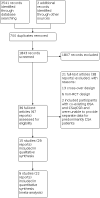
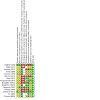

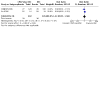
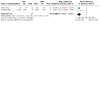
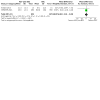
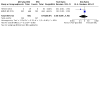
Update of
- doi: 10.1002/14651858.CD012889
Similar articles
-
Pharmacological treatment for central sleep apnoea in adults.Cochrane Database Syst Rev. 2023 Feb 27;2(2):CD012922. doi: 10.1002/14651858.CD012922.pub2. Cochrane Database Syst Rev. 2023. PMID: 36861808 Free PMC article.
-
Non-invasive positive airway pressure therapy for improving erectile dysfunction in men with obstructive sleep apnoea.Cochrane Database Syst Rev. 2021 Sep 23;9(9):CD013169. doi: 10.1002/14651858.CD013169.pub2. Cochrane Database Syst Rev. 2021. PMID: 34555186 Free PMC article.
-
Systemic corticosteroids for the treatment of COVID-19: Equity-related analyses and update on evidence.Cochrane Database Syst Rev. 2022 Nov 17;11(11):CD014963. doi: 10.1002/14651858.CD014963.pub2. Cochrane Database Syst Rev. 2022. PMID: 36385229 Free PMC article.
-
Gene therapy for people with hepatocellular carcinoma.Cochrane Database Syst Rev. 2024 Jun 4;6(6):CD013731. doi: 10.1002/14651858.CD013731.pub2. Cochrane Database Syst Rev. 2024. PMID: 38837373 Free PMC article.
-
Continuous positive airway pressure (CPAP) for apnoea of prematurity.Cochrane Database Syst Rev. 2023 Jul 18;7(7):CD013660. doi: 10.1002/14651858.CD013660.pub2. Cochrane Database Syst Rev. 2023. PMID: 37481707 Free PMC article.
Cited by
-
Predictors of Initial CPAP Prescription and Subsequent Course with CPAP in Patients with Central Sleep Apneas at a Single Center.Lung. 2023 Dec;201(6):625-634. doi: 10.1007/s00408-023-00657-z. Epub 2023 Nov 21. Lung. 2023. PMID: 37987861 Free PMC article.
-
Novel device therapies in heart failure: focus on patient selection.Front Cardiovasc Med. 2025 Feb 25;12:1419873. doi: 10.3389/fcvm.2025.1419873. eCollection 2025. Front Cardiovasc Med. 2025. PMID: 40071231 Free PMC article. Review.
References
References to studies included in this review
CANPAP 2006 {published data only}
-
- Arzt M, Floras JS, Logan AG, Kimoff RJ, Series F, Morrison D, et al. Suppression of central sleep apnea by continuous positive airway pressure and transplant-free survival in heart failure: a post hoc analysis of the Canadian Continuous Positive Airway Pressure for Patients with Central Sleep Apnea and Heart Failure Trial (CANPAP). Circulation 2007;115 C(25):3173-80. [DOI: 10.1161/CIRCULATIONAHA.106.683482] [CRSREF: 19581355] - DOI - PubMed
-
- Arzt M, Floras JS, Logan AG, Ryan C, Tomlinson G, Douglas BT. The CANPAP trial: effects of CPAP on central sleep apnea, cardiovascular function and mortality in heart failure [Abstract]. Sleep Medicine 2006;7 C:S19 [142]. [DOI: 10.1016/j.sleep.2006.07.046] - DOI
-
- Arzt M, Ryan C, Logan AG, Floras JS, Bradley TD. Transplant free survival of heart failure patients according to effect of CPAP on central sleep apnea in the CANPAP trial [Abstract]. Proceedings of the American Thoracic Society 2006;3:A516.
D'Elia 2019 {published data only}
-
- D'elia E, Ferrero P, Vittori C, Baio P, Duino V, Grosu A, et al. Enhanced adaptive servo-ventilation improves echocardiographic parameters of diastolic and right ventricle function in patients with sleep apnea and heart failure with preserved ejection fraction. European Journal of Heart Failure 2016;18:474.
-
- D’Elia E, Ferrero P, Vittori C, Iacovoni A, Grosu A, Gori M, et al. Beneficial effects of adaptive servo-ventilation on natriuretic peptides and diastolic function in acute heart failure patients with preserved ejection fraction and sleep-disordered breathing. Sleep and Breathing 2019;23:287-91. [DOI: 10.1007/s11325-018-1681-z] - DOI - PubMed
Dellweg 2013 {published data only}
Fietze 2008 {published data only}
Granton 1996 {published data only}
Hetland 2013 {published data only}
-
- Hetland A, Haugaa KH, Olseng M, Gjesdal O, Ross S, Saberniak J, et al. Three months treatment with adaptive servo-ventilation improves cardiac function and physical activity in patients with chronic heart failure and Cheyne-Stokes respiration in a prospective randomized controlled trial. Circulation 2011;124(21 Suppl):A11007. [DOI: 10.1161/circ.124.suppl_21.A11007] - DOI - PubMed
-
- Hetland A, Haugaa KH, Olseng M, Gjesdal O, Ross S, Saberniak J, et al. Three-month treatment with adaptive servoventilation improves cardiac function and physical activity in patients with chronic heart failure and Cheyne-Stokes respiration: a prospective randomized controlled trial. Cardiology 2013;126(C(2)):81-90. [DOI: 10.1159/000350826] - DOI - PubMed
-
- Olseng MW, Olsen BF, Hetland A, Fagermoen S, Jacobsen M. Quality of life improves in patients with chronic heart failure and Cheyne-Stokes respiration treated with adaptive servo-ventilation in a nurse-led heart failure clinic. Journal of Clinical Nursing 2017;26(9-10):1226-33. [DOI: 10.1111/jocn.13416] - DOI - PubMed
Kasai 2013 {published data only}
-
- Kasai T, Kasagi S, Maeno K-I, Dohi T, Kawana F, Kato M, et al. Adaptive servo-ventilation in cardiac function and neurohormonal status in patients with heart failure and central sleep apnea nonresponsive to continuous positive airway pressure. JACC: Heart Failure 2013;1(1):58-63. [DOI: 10.1016/j.jchf.2012.11.002] - DOI - PubMed
Morgenthaler 2014 {published data only}
-
- Morgenthaler TI, Kuzniar TJ, Wolfe LF, Willes L, McLain WC, Goldberg R. The Complex Sleep Apnea Resolution Study: a prospective randomized controlled trial of continuous positive airway pressure versus adaptive servoventilation therapy. Sleep 2014;37(5):927-34. [DOI: 10.5665/sleep.3662] - DOI - PMC - PubMed
Naughton 1995a {published data only}
-
- Naughton MT, Liu PP, Bernard DC, Goldstein RS, Bradley TD. Treatment of congestive heart failure and Cheyne-Stokes respiration during sleep by continuous positive airway pressure. American Journal of Respiratory and Critical Care Medicine 1995;151(1):92-7. [DOI: 10.1164/ajrccm.151.1.7812579] - DOI - PubMed
-
- Naughton MT, Lui PP, Benard DC, Goldstein RS, Bradley TD. A randomized controlled clinical trial of CPAP in patients with heart failure and Cheyne-Stokes respiration. American Review of Respiratory Disease 1993;147(7):A687.
Naughton 1995b {published data only}
Pepperell 2003 {published data only}
-
- Pepperell JCT, Maskell NA, Jones DR, Langford-Wiley BA, Crosthwaite N, Stradling JR, et al. A randomized controlled trial of adaptive ventilation for Cheyne-Stokes breathing in heart failure. American Journal of Respiratory and Critical Care Medicine 2003;168(9):1109-14. [DOI: 10.1164/rccm.200212-1476OC] - DOI - PubMed
Philippe 2006 {published data only}
-
- Philippe C, Stoica-Herman M, Drouot X, Raffestin B, Escourrou P, Hittinger L, et al. Compliance with and effectiveness of adaptive servoventilation versus continuous positive airway pressure in the treatment of Cheyne-Stokes respiration in heart failure over a six month period. Heart 2006;92(3):337-42. [DOI: 10.1136/hrt.2005.060038] - DOI - PMC - PubMed
SERVE HF 2015 {published data only}
-
- Cowie M, Woehrle H, Wegscheider K, Angermann C, D'Ortho MP, Erdmann E, et al. Treatment of predominant central sleep apnoea with ASV in patients with chronic heart failure: SERVE-HF primary results. European Respiratory Journal 2015;46:OA3475. [DOI: 10.1183/13993003.congress-2015.OA3475] - DOI
-
- Eulenburg C, Wegscheider K, Woehrle H, Angermann C, D'Ortho M-P, Erdmann E, et al. Understanding SERVE-HF: a multistate analysis to explain mechanisms underlying increased mortality risk in patients randomised to adaptive servo-ventilation (ASV). European Respiratory Journal 2016;48:OA1985. [DOI: 10.1183/13993003.congress-2016.OA1985] - DOI
-
- Tamisier R, Pepin JL, Cowie M, Wegscheider K, Vettorazzi E, Suling A, et al. Adaptive servo-ventilation for central sleep apnea in systolic heart failure: PSG data from the SERVE-HF major substudy. American Journal of Respiratory and Critical Care Medicine 2017;195:A4513. [DOI: 10.1164/ajrccm-conference.2017.B80-G] - DOI
Sin 2000 {published data only}
Toyama 2016 {published data only}
-
- Toyama T, Hoshizaki H, Kasama S, Miyaishi Y, Kan H, Yamashita E, et al. Adaptive servo-ventilation therapy improves cardiac sympathetic nerve activity, cardiac function, exercise capacity, and symptom in patients with chronic heart failure and Cheyne-Stokes respiration. Journal of Nuclear Cardiology 2016;24(6):1-12. [DOI: 10.1007/s12350-016-0529-9] - DOI - PubMed
References to studies excluded from this review
Arzt 2005 {published data only}
Campbell 2012 {published data only}
-
- Campbell A, Ferrier K, Neill A. Oxygen versus adaptive pressure support servoventilation (Autoset CS) in patients with central sleep apnoea-Cheyne Stokes respiration (CSA-CSR) and congestive heart failure (CHF). Internal Medicine Journal 2005;35:A43. - PubMed
Cao 2014 {published data only}
Galetke 2014 {published data only}
-
- Galetke W, Anduleit N, Funke N, Kuhnel J, Richter K, Stieglitz S. Continuous positive airway pressure versus adaptive servoventilation in patients with combined obstructive sleep apnea and Cheyne-Stokes respiration. American Thoracic Society International Conference 2009;179:A5339.
-
- Galetke W, Ghassemi BM, Priegnitz C, Stieglitz S, Anduleit N, Richter K, et al. Anticyclic modulated ventilation versus continuous positive airway pressure in patients with coexisting obstructive sleep apnea and Cheyne-Stokes respiration: a randomized crossover trial. Sleep Medicine 2014;15(8):874-9. [DOI: 10.1016/j.sleep.2014.02.012] - DOI - PubMed
-
- Galetke W, Kietzmann I, Richter K, Randerath W. Continuous positive airway pressure versus adaptive servoventilation in patients with obstructive sleep apnea and Cheyne-stokes respiration - a randomized cross-over trial. In: European Respiratory Society 19th Annual Congress; 2009 Sep 12-15; Vienna. 2009:[362].
Hetland 2014 {published data only}
-
- Hetland A, Haugaa K, Vistnes M, Liland KH, Olseng M, Jacobsen MB, et al. Adaptive servo-ventilation decreased mortality and admission rates in heart failure patients with Cheyne-Stokes respiration in a 18 months prospective study. Journal of the American College of Cardiology 2014;63(12 Suppl 1):A757.
Hetland 2017 {published data only}
Hetzenecker 2016 {published data only}
Hu 2005 {published data only}
-
- Hu K, Yang J, Chen XQ, Yu CP, Zhao JL. Comparison of oxygen therapy with nasal continuous positive airway pressure on Cheyne-Stokes respiration in patients with chronic congestive heart failure. Chinese Journal of Internal Medicine 2005;44(10):759-63. - PubMed
Javaheri 2011 {published data only}
-
- Javaheri S, Goetting MG, Goodwin JL, Wylie P, Khayat R. Auto servo ventilation successfully treats complex central sleep apnea (CompCSA) and Hunter-Cheyne-Stokes breathing (HCSB). Sleep 2010;33(Suppl):A146-7.
-
- Javaheri S, Khayat R, Goodwin J, Wylie P, Goetting M. Complex central sleep apnea (compcsa) treatment with auto servo ventilation. Chest 2009;136(4):43S-f. [DOI: 10.1378/chest.136.4_MeetingAbstracts.43S-f] - DOI
Kasai 2010 {published data only}
-
- Kasai T, Usui Y, Yoshioka T, Yanagisawa N, Takata Y, Narui K, et al. Effect of flow-triggered adaptive servo-ventilation compared with continuous positive airway pressure in patients with chronic heart failure with coexisting obstructive sleep apnea and Cheyne-Stokes respiration. Circulation: Heart Failure 2010;3(1):140-8. [DOI: 10.1161/CIRCHEARTFAILURE.109.868786] - DOI - PubMed
Kohnlein 2002 {published data only}
-
- Kohnlein T, Welte T, Tan LB, Elliott MW. Treatment of central sleep apnea in patients with chronic heart failure with CPAP or bilevel ventilation. American Journal of Respiratory and Critical Care Medicine 2002;165 C(Suppl 8):A247.
Krachman 1999 {published data only}
Krachman 2003 {published data only}
Liu 2015 {published data only}
-
- Liu J, Lu Z, Zhu X, Zhang D, Sun M, Zhang X, et al. Beneficial effect of bilevel positive airway pressure on Cheyne-Stokes respiration in patients with congestive heart failure. Sleep Medicine 2015;16:S190.
Morgenthaler 2007 {published data only}
-
- Gay PC, Morgenthaler TI, Brown LK, Fedorovich CL. A multi-center randomized trial of adaptive servo-ventilation (ASV) vs bilevel nasal positive pressure ventilation (NPPV) treatment for central apnea/Cheyne-Stokes respiration (CSA/CSR) and complex sleep apnea syndromes (CompSAS) [Abstract]. In: American Thoracic Society International Conference; 2006 May 19-21; San Diego. 2006.
Oldenburg 2015 {published data only}
-
- Oldenburg O, Bitter T, Prib N, Lohse M, Koerber B, Fischbach T, et al. Performance of adaptive servoventilation and enhanced adaptive servoventilation in heart failure patients with central sleep apnea. Sleep 2012;35 C:A176.
-
- Oldenburg O, Spiesshofer J, Fox H, Prib N, Horstkotte D. Performance of conventional and enhanced adaptive servoventilation (ASV) in heart failure patients with central sleep apnea who have adapted to conventional ASV. Sleep and Breathing 2015;19(3):795-800. [DOI: 10.1007/s11325-014-1083-9] - DOI - PubMed
Priefert 2017 {published data only}
-
- Priefert HJ, Hetzenecker A, Escourrou P, Luigart R, Series F, Lewis K, et al. Effects of adaptive servo-ventilation on ventricular arrhythmias in patients with stable chronic heart failure and sleep-disordered breathing: subanalysis of a randomized controlled trial. Somnologie 2016;20(2):96-105. [DOI: 10.1007/s11818-016-0072-6] - DOI
-
- Priefert H-J, Hetzenecker A, Escourrou P, Luigart R, Series F, Lewis K, et al. Effects of adaptive servoventilation on ventricular arrhythmias in patients with stable congestive heart failure and sleep-disordered breathing: subanalysis of a randomized controlled trial. Somnologie 2017;Suppl 1(21):S19–27. [DOI: 10.1007/s11818-016-0072-6] - DOI
Randerath 2012 {published data only}
-
- Randerath W, Galetke W, Stiegliitz S, Priegnitz C, Schafer T. Adaptive servoventilation in coexisting obstructive sleep apnoea/hypopnoea and Cheyne-Stokes respiration [Abstract]. In: European Respiratory Society 18th Annual Congress; 2008 Oct 3-7; Berlin. 2008.
-
- Randerath W, Nothofer G, Anduleit N, Tremi M, Schafer T, Galetke W. Longterm efficacy of adaptive servo-ventilation (ASV) in patients with co-existing obstructive sleep apnea (OSAS) and Cheyne-stokes respiration (CSR). A randomized CPAP-controlled trial [Abstract]. In: European Respiratory Society 19th Annual Congress; 2009 Sep 12-15; Vienna. 2009:[359].
-
- Randerath W, Nothofer G, Anduleit N, Treml M, Priegnitz C, Galetke W. Effect of auto servo-ventilation (ASV) and continuous positive airway pressure (CPAP) on B-type natriuretic peptide (NT-proBNP) in patients with co-existing obstructive (OSA) and central sleep apnea (CSA) in heart failure (HF). In: European Respiratory Society Annual Congress; 2011 Sep 24-28; Amsterdam. 2011 . [299s [P1744]]
-
- Randerath W, Nothofer G, Anduleit N, Treml M, Priegnitz C, Galetke W. Efficacy of auto servo-ventilation (ASV) in patients with co-existing obstructive sleep apnea (OSAS) and Cheyne-Stokes respiration (CSR). A randomized CPAP-controlled trial [Abstract]. In: European Respiratory Society 20th Annual Congress; 2010 Sep 18-22; Barcelona. 2010:[P924].
-
- Randerath WJ, Galetke W, Domanski U, Gillissen A, Ruhle KH. Efficacy of adaptive servo-ventilation versus constant positive airways pressure therapy in patients with heart failure and Cheyne-Stokes respiration [Abstract]. In: American Thoracic Society 100th International Conference; 2004 May 21-26; Orlando. 2004:B87.
Shapiro 2015 {published data only}
-
- Shapiro CM, Chung SA, Wylie PE, Hossain NK, Holle RH, Rosenberg RP, et al. Home-use servo-ventilation therapy in chronic pain patients with central sleep apnea: initial and 3-month follow-up. Schlaf und Atmung [Sleep and Breathing] 2015;19 C(4):1285-92. [DOI: 10.1007/s11325-015-1161-7] - DOI - PMC - PubMed
Szollosi 2006 {published data only}
Teschler 2001 {published data only}
References to studies awaiting assessment
Alter 2013 {published data only}
-
- Alter P, Wagner J, Apelt S, Rupp H, Heitmann J. Influences of continuous positive airway pressure (CPAP) ventilation on cardiac function and left ventricular wall stress in dilative heart failure as assessed by cardiac magnetic resonance imaging. Somnologie 2013;17:75.
Arzt 2013 {published data only}
-
- Artz M, Series F, Lewis K, Escourrou P, Obermeier R, Keh IV, et al. Effects of auto-servo ventilation on cardiovascular function in patients with congestive heart failure and sleep-disordered breathing - a multicenter randomised controlled trial. European Respiratory Journal 2011;38:1743.
-
- Arzt M, Series F, Lewis K, Benjamin A, Escourrou P, Luigart R, et al. Treatment of central and obstructive sleep apnea in stable heart failure patients with auto-servo ventilation reduces sleep fragmentation - a randomized controlled trial. European Respiratory Journal 2012;40(C Suppl 56):588s [3289].
-
- Birner C, Series F, Lewis K, Benjamin A, Escourrou P, Luigart R, et al. Treatment with auto-servo ventilation of patients with sleep-disordered breathing, stable systolic heart failure and concomitant diastolic dysfunction - a randomized controlled pilot study. European Respiratory Journal 2012;40:3467.
-
- Birner C, Series F, Lewis K, Benjamin A, Wunderlich S, Escourrou P, et al. Effects of auto-servo ventilation on patients with sleep-disordered breathing, stable systolic heart failure and concomitant diastolic dysfunction: subanalysis of a randomized controlled trial. Respiration 2014;87(1):54-62. [DOI: 10.1159/000351797] - DOI - PubMed
CAT‐HF 2016 {published data only}
-
- Fiuzat M, Oldenberg O, Whellan DJ, Woehrle H, Punjabi NM, Anstrom KJ, et al. Lessons learned from a clinical trial: design, rationale, and insights from The Cardiovascular Improvements with Minute Ventilation-targeted Adaptive Sero-Ventilation (ASV) Therapy in Heart Failure (CAT-HF) Study. Contemporary Clinical Trials 2016;47:158-64. [DOI: 10.1016/j.cct.2016.01.001] - DOI - PubMed
-
- O'connor C, Whellan D, Fiuzat M, Benjafield A, Woehrle H, Punjabi N, et al. Adaptive servo-ventilation in heart failure: results of a randomized, controlled clinical trial. European Journal of Heart Failure 2016;18:318. [DOI: 10.1002/ejhf.539] - DOI
-
- O'Connor CM, Whellan DJ, Fiuzat M, Punjabi NM, Tasissa G, Anstrom KJ, et al. Cardiovascular outcomes with minute ventilation-targeted adaptive servo-ventilation therapy in heart failure: the CAT-HF trial. Journal of the American College of Cardiology 2017;69(12):1577-87. [DOI: 10.1016/j.jacc.2017.01.041] - DOI - PubMed
De Michelis 2008 {published data only}
-
- De Michelis C, Prest G, Perretta E, Riva L, Zoccali P. Congestive heart failure and Cheyne-Stokes periodic respiration breathing: new modalities of positive airways pressure ventilation alternative to CPAP. Rassegna di Patologia dell'Apparato Respiratorio 2008;23(1):17-25.
Egea 2004 {published and unpublished data}
-
- Egea C, Aizpuru F, Pinto J, Ayuela J, Ballester E, Zamarron C, et al. Cardiac function after CPAP therapy in chronic heart failure and sleep apnea. A multicenter study. In: American Thoracic Society International Conference; 2007 May 18-23; San Francisco. [A296]
-
- Egea C, Pinto J, Ayuela J, Ballester E, Zamarron C, Sojo A, et al. Eficacy of the treatment with CPAP in patients with chronic heart failure and sleep apnoea. European Respiratory Journal 2004;24 C(Suppl 48):564s.
Goldberg 2007 {published data only}
-
- Goldberg LR, Horstkotte D, Shakar SF, Lowes BD, Walker JM, Cloward TV, et al. Long term results of a randomized multicenter trial comparing adaptive servo ventilation positive airway pressure to nasal oxygen in heart failure patients with central sleep apnea. Journal of the American College of Cardiology 2007;49(9):94A-5A.
Miyata 2012 {published data only}
-
- Miyata M, Yoshihisa A, Suzuki S, Sugimoto K, Yamaki T, Kunii H, et al. Adaptive servo ventilation improves cardiac function and reduces re-hospitalization in chronic heart failure patients with Cheyne-Stokes respiration after cardiac resynchronization therapy. European Heart Journal 2012;33:332. [DOI: 10.1016/j.jjcc.2012.01.021] - DOI
-
- Miyata M, Yoshihisa A, Suzuki S, Yamada S, Kamioka M, Kamiyama Y, et al. Adaptive servo ventilation improves cardiac function and prognosis in chronic heart failure patients with Cheyne-Stokes respiration after cardiac resynchronization therapy. In: American Heart Association (AHA) Scientific Sessions; 2011 Nov 12-16; Orlando. 2011.
Murase 2016 {published data only}
-
- Murase K, Ono K, Akao M, Miki S, Nohara R, Mishima M, et al. The clinical effects of adaptive servo ventilation versus nocturnal oxygen therapy for sleep disordered breathing in heart failure patients: a randomized trial. American Journal of Respiratory and Critical Care Medicine 2015;191:A6109.
Noda 2007 {published data only}
-
- Noda A, Izawa H, Asano H, Nakata S, Hirashiki A, Murase Y, et al. Beneficial effect of bilevel positive airway pressure on left ventricular function in ambulatory patients with idiopathic dilated cardiomyopathy and central sleep apnea-hypopnea: a preliminary study. Chest 2007;131(C(6)):1694-701. [DOI: 10.1378/chest.06-2271] - DOI - PubMed
Teschler 2000 {published data only}
-
- Teschler H, Dohring J, Wessendorf TE, Wang YM, Thilmann A, Berthon Jones M. Effect of autoset CS servo-ventilation on central sleep apnea in brainstem stroke. American Journal of Respiratory and Critical Care Medicine 2000;161 C(3 Suppl):A361.
Tkacova 1997 {published data only}
-
- Tkacova R, Liu PP, Naughton MT, Bradley TD. Effect of continuous positive airway pressure on mitral regurgitant fraction and atrial natriuretic peptide in patients with heart failure. Journal of the American College of Cardiology 1997;30(3):739-45. - PubMed
Toepfer 2003 {published data only}
-
- Toepfer V, El-Sebai MA, Schulz R, Wessendorf TE, Teschler H. Six weeks adaptive servo-ventilation increases exercise capacity and reduces sympathetic activity in central sleep apnea due to heart failure [Abstract]. In: American Thoracic Society 99th International Conference; 2003 May 16-21; Seattle. 2003.
Ushijima 2014 {published data only}
Vogt‐Ladner 2002 {published data only}
-
- Vogt Ladner G, Schacher C, Ditterich W, Vogt M, Teschler H, Worth H. Nocturnal oxygen therapy (NOY) versus adaptive servo-ventilation (ASV) in patients with severe chronic heart failure (CHF) and Cheyne Stokes respiration (CSR). American Journal of Respiratory and Critical Care Medicine 2002;165(C Suppl 8):A247.
Yoshihisa 2009 {published data only}
-
- Yoshihisa A, Sato T, Suzuki H, Saito S, Ishibashi T, Takeishi Y. Adaptive servo ventilation restores cardiac dysfunction in heart failure patients with Cheyne-Stokes respiration. European Journal of Heart Failure 2009;8:ii75.
Yoshihisa 2013 {published data only}
-
- Yoshihisa A, Suzuki S, Takeishi Y. Impact of adaptive servo ventilation on cardiovascular function and prognosis in patients with HFpEF and sleep-disordered breathing. Journal of Cardiac Failure 2014;20(10):S140.
-
- Yoshihisa A, Suzuki S, Yamaki T, Sugimoto K, Kunii H, Nakazato K, et al. Impact of adaptive servo-ventilation on cardiovascular function and prognosis in heart failure patients with preserved leC ventricular ejection fraction and sleep disordered breathing. European Journal of Heart Failure 2013;15:543-50. [DOI: 10.1093/eurjhf/hfs197] - DOI - PubMed
Zhao 2006 {published data only}
-
- Zhao Z, Liu Z, Luo Q. The effect of positive pressure ventilation in patients with heart failure and sleep apnea. In: American Thoracic Society International Conference; 2008 May 16-21; Toronto. 2008:A480.
-
- Zhao ZH, Liu ZH, Luo Q, Xiong CM, Ni XH, Zhang J, et al. Positive pressure ventilation treatment reduces plasma levels of amino terminal-pro brain natriuretic peptide in congestive heart failure patients with sleep apnea. Circulation Journal 2006;70(5):572-4. [DOI: 10.1253/circj.70.572] - DOI - PubMed
-
- Zhao ZH, Liu ZH, Luo Q, Zhang J, Xiong CM, Ni XH, et al. The effects of noninvasive positive pressure ventilation treatment on plasma concentration of amino terminal-pro brain natriuretic peptide in congestive heart failure in patients with sleep apnea. Zhonghua nei ke za zhi [Chinese Journal of Internal Medicine] 2006;45(5):386-8. - PubMed
References to ongoing studies
ChiCTR‐TRC‐12003881 {published data only}
-
- ChiCTR-TRC-12003881. Multicenter study on diagnosis of central sleep apnea complicated with heart failure by diaphragm electromyogram and efficacy of bi-level positive airway pressure ventilation. www.chictr.org.cn/hvshowproject.aspx?id=8123 (first received 1 January 2014).
NCT01128816 {published data only}
-
- Lyons OD, Floras JS, Logan AG, Beanlands R, Cantolla JD, Fitzpatrick M, et al. Design of the effect of adaptive servo-ventilation on survival and cardiovascular hospital admissions in patients with heart failure and sleep apnoea: the ADVENT-HF trial. European Journal of Heart Failure 2017;19(4):579-87. [DOI: 10.1002/ejhf.790] - DOI - PubMed
-
- NCT01128816. Effect of adaptive servo ventilation (ASV) on survival and hospital admissions in heart failure [A multi-centre, randomized study to assess the effects of adaptive servo ventilation (ASV) on survival and frequency of hospital admissions in patients with heart failure (HF) and sleep apnea (SA) - The ADVENT-HF Trial]. clinicaltrials.gov/show/NCT01128816 (first received 24 May 2010).
NCT01212705 {published data only}
-
- NCT01212705. Effect of adaptive servoventilation on cardiac function in chronic heart failure and Cheyne-Stokes respiration [Effect of adaptive servoventilation on cardiac function, exercise tolerance and quality of life in patients with chronic heart failure and Cheyne-Stokes respiration]. clinicaltrials.gov/show/NCT01212705 (first received 1 October 2010).
Additional references
American Academy of Sleep Medicine 2014
-
- American Academy of Sleep Medicine. International Classification of Sleep Disorders. Darien: American Academy of Sleep Medicine, 2014.
Aurora 2012
Bitter 2010
Bixler 2001
Buysse 1989
Carrero 2011
Correa 2015
CRS 2022
-
- CRS (Cochrane Register of Studies). community.cochrane.org/help/tools-and-software/crs-cochrane-register-stu... (accessed 4 February 2022).
Donovan 2016
Eckert 2007
EPOC 2013
-
- EPOC. Data collection form. EPOC Resources for Review Authors. epoc.cochrane.org/epoc-specific-resources review-authors (accessed prior to 24 July 2017).
Epstein 2009
GRADEpro GDT [Computer program]
-
- GRADEpro GDT. Version accessed 24 July 2017. Hamilton (ON): McMaster University (developed by Evidence Prime). Available from gradepro.org.
Hanly 1996
Hanly 2001
-
- Hanly PJ, Pierratos A. Improvement of sleep apnea in patients with chronic renal failure who undergo nocturnal hemodialysis. New England Journal of Medicine 2001;344(2):102-7. - PubMed
Higgins 2011
-
- Higgins JPT, Green S, editor(s). Cochrane Handbook for Systematic Reviews of Interventions Version 5.1.0 (updated March 2011). The Cochrane Collaboration, 2011. Available from training.cochrane.org/handbook/archive/v5.1/.
Higgins 2022
-
- Higgins JPT, Thomas J, Chandler J, Cumpston M, Li T, Page MJ, Welch VA, editor(s). Cochrane Handbook for Systematic Reviews of Interventions version 6.3 (updated February 2022). Cochrane, 2022. Available from training.cochrane.org/handbook.
Javaheri 2009
Jenkinson 1996
-
- Jenkinson C, Layte R, Wright L, Coulter A. Manual and Interpretation Guide for the UK SF-36. Oxford: Health Services Research Unit, 1996.
Johnson 2010
Kuźniar 2008a
Kuźniar 2008b
Kuźniar 2011
MacDonald 2008
Moher 2009
Moura 2001
Muzumdar 2008
Nakamura 2015
-
- Nakamura S, Asai K, Kubota Y, Murai K, Takano H, Tsukada YT, et al. Impact of sleep-disordered breathing and efficacy of positive airway pressure on mortality in patients with chronic heart failure and sleep-disordered breathing: a meta-analysis. Clinical Research in Cardiology 2015;104(3):208-16. [DOI: 10.1007/s00392-014-0774-3] - DOI - PubMed
Naughton 2012
NYHA 1994
-
- New York Heart Association. Nomenclature and Criteria for Diagnosis of Diseases of the Heart and Great Vessels. 9th revised edition. Boston: Lippincott Williams and Wilkins, 1994.
Peer 2010
Review Manager 2020 [Computer program]
-
- Review Manager 5 (RevMan 5). Version 5.4. Copenhagen: The Cochrane Collaboration, 2020.
Sin 1999
-
- Sin DD, Fitzgerald F, Parker JD, Newton G, Floras JS, Bradley TD. Risk factors for central and obstructive sleep apnea in 450 men and women with congestive heart failure. American Journal of Respiratory and Critical Care Medicine 1999;160(4):1101-6. [DOI: 10.1164/ajrccm.160.4.9903020] - DOI - PubMed
Stevenson 2008
-
- Stevenson IH, Teichtahl H, Cunnington D, Ciavarella S, Gordon I, Kalman JM. Prevalence of sleep disordered breathing in paroxysmal and persistent atrial fibrillation patients with normal left ventricular function. European Heart Journal 2008;29(13):1662-9. [DOI: 10.1093/eurheartj/ehn214] - DOI - PubMed
References to other published versions of this review
Pachito 2017
Publication types
MeSH terms
LinkOut - more resources
Full Text Sources
Medical

